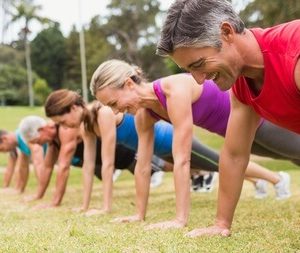Know the Rules to Working Out in the Cold
Vancouver is well known for having a much milder winter than other Canadian cities. However, we still do get hit with cold snaps and the occasional snow storm. Cold weather can dissuade even the most avid athletes. Without the right incentives, it’s easy to pack it in and wait for fairer weather during the winter. However, working out in the cold weather spell doesn’t have to be a disaster for your fitness routine. You need to know the rules to working out in the cold! Here are several tips for working out in the cold weather successfully while keeping motivated and more importantly warm.
Tips for Working Out in The Cold
When you are training outside heat loss is controlled based on two factors:
- a) insulation which includes body fat and clothing
- b) environmental influences such as the wind, temperature and precipitation.
These components together are deciding factors into whether you will be able to maintain a constant comfortable temperature during your activity.
Hypothermia is a Primary Risk Factor
Obviously, the biggest problem when working out in cold weather is the body ending up with abnormally low body temperature, otherwise known hypothermia. The primary factor in cold weather exercise is; how much heat is your body going to lose while you are exercising and how should you dress to maintain the appropriate body temperature?
The hands and feet are a constant area of concern when working out in the cold. Frigid temperatures force the body into protection mode which causes the body to move the blood from the outer extremities towards the internal organs. You can quickly return blood flow to the hands with superficial warming. However, the feet are a different matter; blood flow will not return to them until the torso returns to normal temperature. Therefore to keep your feet warm it is important always to maintain the torso temperature.
Many people make the mistake of dressing incorrectly for outdoor fitness activities. Wearing too much can be just as detrimental as wearing too little.
Layer Up
While wearing a parka may seem like a good idea at the time, when you start to heat up and sweat you will start to feel chilled. When you work out the body creates a lot of heat. You end up feeling much warmer than you would think.
The solution to this problem is an easy fix. Layer your clothing so you can add or remove as needed if you start to heat up or sweat.
Start with a layer that wicks the sweat away from your body. Several companies have this technology, just go to your local sports store and ask. These materials absorb and spread moisture out across the fabric to enhance the evaporative drying rate. Avoid cotton as it stays wet which will make you feel cold.
There is some controversy about what goes next. The next layer can be either a layer of fleece or wool to insulate yourself from the cold. Some people prefer merino wool products while others like fleece. Many outdoor enthusiasts feel the wool can get saturated and takes along to dry. Others don’t like the look or feel of fleece. Many outdoor athletes recommended a lightweight wool base layer, an R1 type fleece and a thin soft shell jacket are the perfect layers.
Remember always to wear an appropriate head covering. When it hits the freezing mark outside, 50% of the heat loss is from the head. Make sure you are wearing an appropriate head covering based on your activity. Helmets should always be worn with high-risk sports. Adding a helmet or hat will add infinite play time outside. Warm inhaled air by covering your face if temperatures are below your comfort level (usually around 0° F) with a scarf cover including your nose and mouth.
Take a Look at the Forecast Ahead of Time
Checking the expected temperature is of great importance especially in a country where it can quickly fall to -20 below overnight. Below freezing temperatures don’t become dangerous when playing outside until you add in the wind chill factor if you have exposed skin. It is, therefore, advisable to cover as much area as possible if there is a wind chill in the area where you will be working out.
Check the temperature and wind conditions before you go out and do not exercise if conditions are dangerous.
Staying hydrated is important whether it is hot or cold weather. Make sure you drink an appropriate amount of fluids before, during and after exercise. Dehydration is often less noticeable when the weather is cold, so ensure you hydrate even if you aren’t thirsty.
Let People Know Your Route
Stay safe when you are going out for extended periods when working out in the cold in case something goes wrong. Make sure you tell someone your route, when you are leaving and when you should be getting back. Hypothermia can set in quickly if you get injured when working out in the cold.
Keep in mind even if you take all precautions and dress correctly working out in frigid temperatures can be hazardous. Try always to have a workout buddy, hydrate properly and fuel up before you go. As a general rule of thumb, it is recommended to take your outdoor activities indoors if temperatures drop below -17.8 or if the wind chill is too intense.
Above all else stay dry, stay warm and have fun! The weather shouldn’t stop you from enjoying the outdoors!
-
 Boot Camp and Outdoor Fitness$103.95
Boot Camp and Outdoor Fitness$103.95

